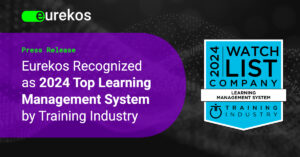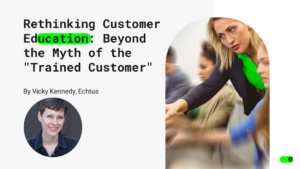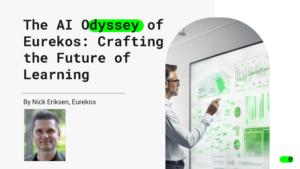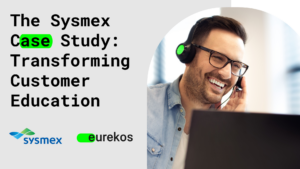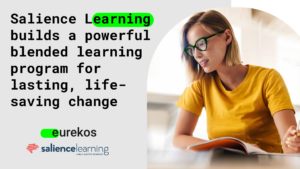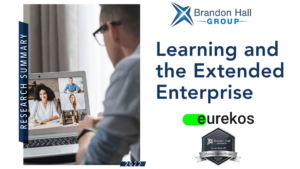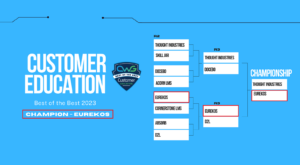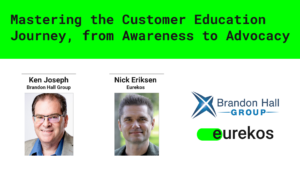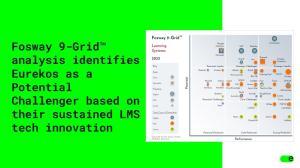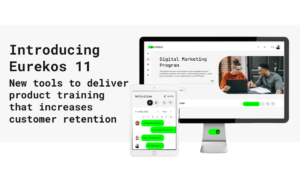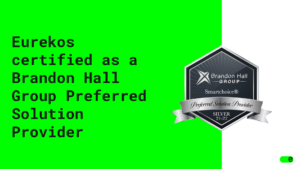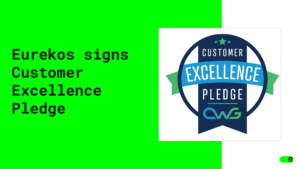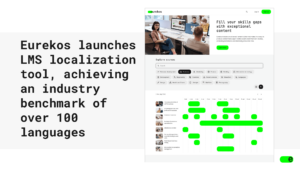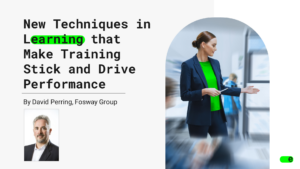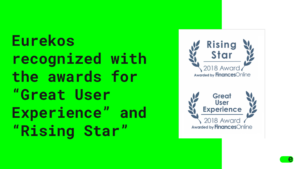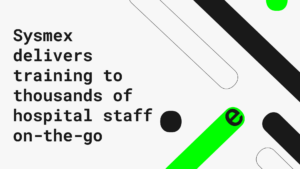By Victor Putyata, Eurekos Systems.
You already have much of the expertise you need to develop online learning content. Here is how the process works on the ground (or, as it were, in the air).
Filling the skills gaps within your organisation requires you to identify the learning outcomes needed by your workforce and developing the lessons they need—along with the work activities that will give those lessons meaning and help the training stick.

Let’s take an example. Imagine that your organisation has adopted a new tablet-based alert system to notify workers when the production process has reached specific thresholds. The system’s goal is to minimise maintenance downtime by applying digital technologies—sensors and software—to capture and relay problems for quick attention before they cause a production delay. No longer will employees rely strictly on “gut instinct” to know when to act.
You could haul those staff members into a classroom for a day or two of training on the new system and hope they remember everything they are taught. You could allow them to learn through trial and error (and write off its necessary costly mistakes). Or you could provide them with a set of digital lessons directly on those tablets.
After a brief introduction to show employees how the tablets work, they could return to work. Then, each time an alert cropped up, they could be directed with a link to a specific video in which a co-worker shows them how to interpret the alert and respond accordingly. An advantage of this approach is that you can grow your inventory of learning content to keep one step ahead of the experience level of your workforce. And when individual staff members have expanded their knowledge beyond the lessons you’ve made available, you can turn them into the content experts and have them produce the next generation of learning materials.
This article lays out a new approach for building the lessons your workforce needs—by tapping into their own expertise and allowing them swiftly to create the training modules for your online learning system.
Building the Vision for Learning
Where do you start? We recommend the use of a “learning blueprint” to document the learning needs of the organisation. The blueprint examines the following areas:
- What learning problems need to be solved;
- What the benefits will be for solving those problems;
- What the future will look like after those problems are solved;
- How those benefits can be quantified through key performance indicators or some other measure; and
- What resources—people and technology—are available to provide learning content.
This document is intended to serve as a roadmap to help you mark progress, whether that is for the purpose of regulatory compliance or to fill the broader skills gaps your organisation needs as it makes its digital transformation. The details will also help you understand what lessons need to be learned on an individual basis and what learning should be tackled as a group activity through social channels. This “progress report” will also serve to keep your online learning efforts moving forward and your executives motivated to continue their own participation and ongoing support of the program.
Identifying Your Experts
Once you have this vision of learning in place, it’s time to begin developing your catalogue of online lessons—either from external or internal sources. Embedding a learning culture calls for the organisation to expand its definition of who the expert is.
You may decide that the experts should be external sources. If your company has just adopted the use of a new application that’s widely available and all the staff needs is some basic lessons, or you want them to develop “soft skills” in standardised areas such as communication or writing, you could easily find expertise freely available on sources such as YouTube or Khan Academy and embed links for those videos into the learning management system (LMS). The disadvantage here is that the lessons would be highly generic and may not apply as closely to your corporate situation as you would prefer.
Depending on the subject matter, you could also licence training content through international services such as OpenSesame, LinkedIn’s, Lynda.com, Coursera, Udemy, 360training, Pluralsight or HubSpot Academy. The Eurekos LMS, specifically, can host any of the lessons from these content providers to make it look like it is being delivered right from your company, simplifying access for the learner.
A third route—the one we recommend—is to develop your internal subject matter experts (SMEs), especially for content that is specific to your organisation. These SMEs are individuals who have excelled in their jobs and proven themselves willing to share what they know. Outfitted with a smartphone camera, for instance, these experts can quickly put together short videos explaining a specific task. Once those are placed into your LMS catalogue, others can access them on an as-needed basis to solve their problems. The result is employee-to-employee learning, the existence of which accelerates development of a learning culture.
Your company may have dedicated subject matter experts; but relying solely on them to provide learning materials can create a bottleneck. On the other hand, you have a lot of people in the field. If you allow them to build courses and contribute to the content side of things, you exponentially grow the number of people contributing to a company’s structures and knowledge. Then your formal subject matter experts or the learning department can dedicate their time to validating that, where required by regulations, the learning meets compliance levels, quality measures, or standard procedures before it’s added to the LMS for distribution.
Capturing and Converting Knowledge into Lessons
A massive amount of knowledge already exists within your organisation. Often, it’s just not very well documented. The key to succeeding with online learning is to capture what these “homegrown” experts know and to convert it into lessons.
Take the example of a crane operator. Who’s the best person to do training about how to handle a rope change on a crane? That’s the guy who’s doing it as part of his job and is the most skilled at it. So why not let him create the e-learning and allow the subject matter expert to validate that the way he does it is exactly according to the quality manual and the standard procedures?
The funny thing is that people who really love their work, those are the people who love to tell other people how to do it. They don’t feel like it’s a burden. Sometimes if you ask an overburdened subject matter expert to produce more e-learning, he or she will really feel the stress—whereas the person who does this activity every day sees it as an opportunity to be known as the best at their job. Often, the only thing holding them back is software licensing or software that’s too complicated for them to use.
Another benefit: You do not need to figure out how to get a crew 30 meters into the air (or whatever the specialised environment is) to produce the video. You can train the crane operator how to use the camera and make a small film. Once that person is down from the crane, you have your movie.
The same is true for numerous other settings. If you want to do a demonstration of a new device, a new piece of medical equipment, get the people who actually know how to operate this machine to show it instead of a sales person or actor. We are finding that people don’t really like these polished movies or interactions because it feels too much like a commercial. They want the real stuff. They want people who know stuff because it’s a lot more credible. It’s really about making learning objects that are authentic.
In a setting where the training involves software, the expert can be taught to turn on a screen capture function that records his or her voice as well as the on-screen steps taken in the program to handle a specific operation.
No matter what the type of activity that needs to be explained in the lesson, by turning to these skilled workers, you can quickly populate your learning management system with content that’s relevant and specific.
Another benefit is that by relying on internal experts, whenever the training needs to be updated, you can call on that same individual to redo the recording and replace that part of the lesson that is out of date. It’s no longer a big deal involving production companies, scripting or makeup artists.
Developing Other Forms of Online Learning
Your organisation can also use text and diagrams from reports, whitepapers, web content and other company sources to create interactive content to accompany the videos. A well-designed learning management system provides the tools and features needed to convert those materials into digital content that can be used to amplify and support your video learning.
The same is true for social media. People are already interacting with each other outside of a classroom. By building similar capabilities into your learning program, you can allow them to maintain their conversations that extend beyond the immediate lessons at hand and continue the emphasis on growing a learning culture.
The Need for Nimble Learning
E-learning consultant David Patterson, who runs Learning Light, a centre of excellence in the use of learning technologies, recalled a global ferry operator that had a learning & development unit focused on health and safety training and an external agency to which it outsourced all other learning content.
Frustrated with the slow response to a request for a specific module of training, one compliance manager took matters into his own hands and created a lesson for all staff, warning them to “shut the storage warehouse when you leave to keep the rats out.” The learning “was pretty rough,” Patterson added, “but he was able to build it quickly and checked out that everybody had taken the course.” The result: The compliance manager “solved his rat infestation problem.”
Omeed Aminian is a Senior Consultant with Eurekos, helping customers to develop and transform their learning cultures.Eurekos is a European-based company that produces a highly popular learning management system and helps its clients create learning with impact by speeding up the creation and delivery of learning content.




